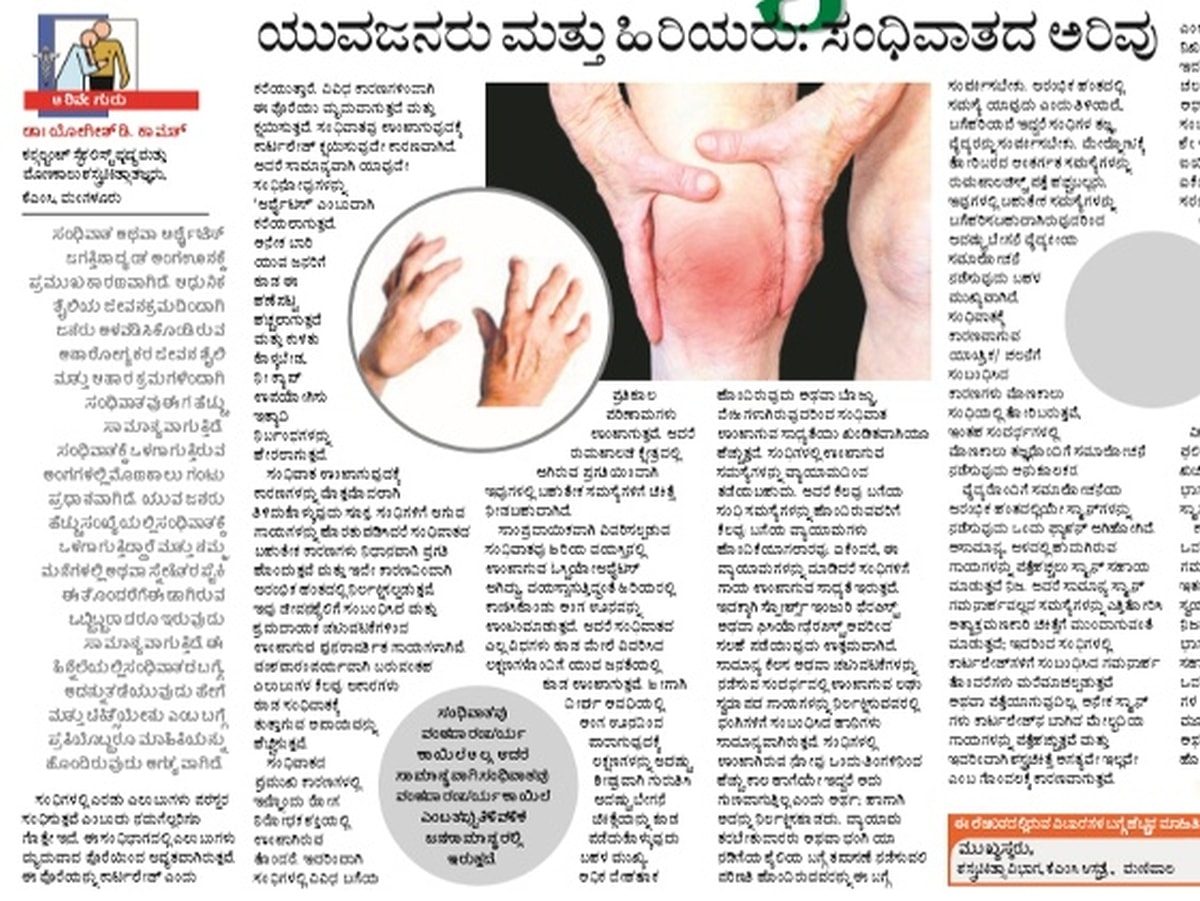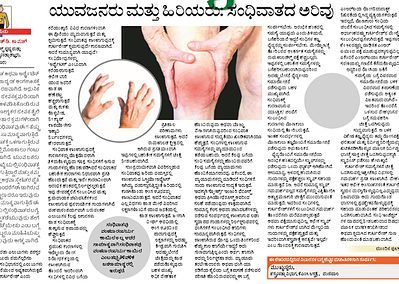The bones are coated with a smooth layer where they come in contact with each other at the joints: this coating is called cartilage and it becomes soft and wears away for various reasons. Reduction of cartilage in our joints is what constitutes arthritis. In practice however, any painful joints are referred to as ‘arthritis’. It often becomes a label for even young persons to live with and various restrictions are imposed on the sufferer, like instructions not to sit down, use knee caps, etc. One needs to understand what can cause this problem first. Apart from injuries to the joints, most causes of arthritis are slow to develop and hence neglected in the initial stages. These are lifestyles and strenuous activities that cause repetitive injury with the patient not understanding. Certain genetically derived bone shapes make us more prone for particular strains to the joints and lead to problems, even though arthritis itself is not inherited (a very common misconception). An important cause is malfunctioning of our immune system, that causes various types of joint affections – most of these however are treatable due to great developments in the field of Rheumatology.
Traditionally described arthritis is also the commonest type – Osteoarthritis that is age (wear and tear) related and can get disabling in senior citizens. However, all the types of arthritis with causes described above manifest in younger patients alike. The most important key therefore in keeping oneself free from disability in the long run is to recognize and seek the right treatment at an early stage.
Being overweight or obese is certainly associated with a higher risk of arthritis. Exercise too helps prevent joint problems. However, certain types of impact exercises may not be suited for people with certain conditions as they might develop strains or injuries. Advice from a sports injury specialist or physiotherapist can be sought. Gait or posture aberrations are common in people who have neglected minor injuries that might have occurred during normal work and activity. One should not neglect joint pains if they persist for more than a month as it would then mean that an injury is not healing. Consultation with an exercise trainer or someone qualified to check posture or walking style is sufficient. A joints specialist can be consulted if the issue is not rectified initially. Seemingly subtle medical problems would be picked up by a Rheumatologist. Early diagnosis of these helps as most can be completely reversed with medical treatment. Mechanical causes of arthritis are commonly evident in the knee joints, in which cases a knee specialist’s consultation can help.
It has increasingly become a fashion to get scans at an early consultation stage. Though this is good for detecting obscure injuries, a general scan might pick up insignificant problems and lead to often overaggressive treatment; while they miss significant problems related to cartilage in the joints. Many scans detect meniscus cartilage tears and thereby bring about confusion as to whether surgery is required. It is a known fact that there is a known error element in the diagnostic accuracy of MRI. On the other hand, almost half of mechanical knee problems are related to issues with the surface cartilage – a whopping 90% of these would not be picked up in a routine MRI where cartilage sequence is not undertaken. The ideal sequence of events should therefore be for a specialist to examine the patient after thorough discussion of their problem – this leads to focused attention on the part involved. The specialist can then direct the scanning to pay thorough attention on a particular part depending on their diagnosis or specific suspicion.
There have been remarkable developments recently in the treatment of cartilage problems. Though it is true that cartilage cannot self- repair itself like most other tissues of the body, we can now offer solutions to help regenerate cartilage tissue in areas where it has been damaged. Partially damaged or fissured cartilage can be made to heal by providing healing factors in the form of joint injections. Fully damaged cartilage can be treated with new techniques like use of Bone Marrow Stem cells that make cartilage grow back. New developments have made such techniques simpler and they can be undertaken with simple keyhole surgery instead of open operations. However, success of the new technologies depends on the patient presenting for treatment at an early arthritis stage.
Extensive cartilage damage leads to severe arthritis which can then be treated successfully only with Joint Replacement. Patients who have a cultural based negative outlook to surgery seek treatment at a late stage and expect that the above ‘stem cell’ techniques will work. Similarly, when advised exercises, etc. at early stages of arthritis, many patients are non- compliant, which leads to the problem getting into a severe stage. People are also subject to multiple marketed ‘wonder- drugs’ which may not have a scientific background. Hence the onus of making one’s problem better lies with the individual, who should seek the right advice at the right stage. Similarly, patients need access to information about how to approach the right service for their particular issue, such that comprehensive care for ailments are provided in a non- biased and scientific manner.




